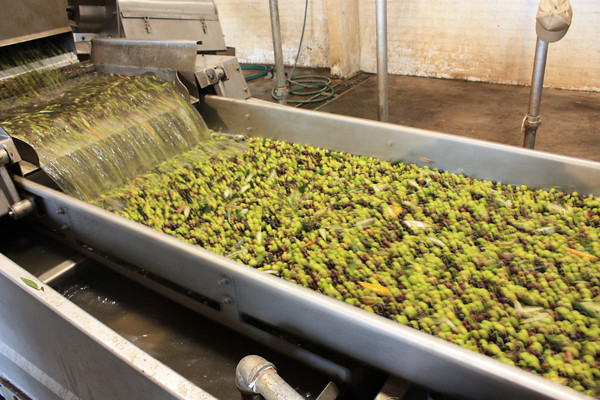
This article, published on March 9, 2011 has been provided for Olive This! by our distributor. It will shed some light on the two different processes used to flavor extra virgin olive oils:
First off, lets talk about “fused” olive oil or what is also referred to as “agrumato” in Italy. Agrumato olive oil is made by crushing ripe, sound olives with whole, fresh fruits, herbs or vegetables at the time of crush. In the winter, at our mill in Tunisia, citrus fruit is picked at the peak of ripeness, split in half and then thrown in with the olives. The olives and fruit are then crushed simultaneously. This process allows for the essential oils from the citrus peel to mingle with the oil from the olives. By the way, ripe olives contain up to 20% oil but the majority of an olive is comprised of water. The waste water from the citrus and olives is centrifuged away and the result is a bright, fresh, fused citrus olive oil.
More than 90% of the world’s fused or agrumato olive oil is made in the Northern Hemisphere. Because agrumato is typically made from ripe olives at the end of the season, the window for crushing in the Northern Hemisphere is in the winter, usually between mid December and late January. With few exceptions, many fresh fruits, vegetables and herbs are unavailable during these cold winter months. More often than not, when one sees a product claiming that it is an agrumato chili oil or agrumato basil oil, the mill is either adding frozen or freeze dried product to the olives at the time of crush, or simply lying about the process and actually infusing olive oil after the fact.
Infusing is the process of adding flavor to olive oil after it has been made. For some, infusing olive oil is nothing more than attempt to cover up poor quality, defective, old oil. The problem with this strategy is that regardless of what flavoring is added to poor quality olive oil to mask it, the rancidity, fustiness and other negative attributes will still be evident underneath. Furthermore, synthetic chemicals and flavors are often implemented as flavoring agents because they are more cost effective than, say, essential oils, concentrates or extracts. This “garbage in, garbage out” mentality is rampant in the industry where aesthetics and health take a backseat to the bottom line.
In the test kitchen, when formulating our infused extra virgin olive oils, I have a simple mandate to adhere to. The infused extra virgin olive oils that we make will use the freshest extra virgin olive oils available in our collection that are most aesthetically compatible with the natural products we use to flavor them with. This simple mandate requires that the chemistry, freshness and quality of our infused olive oil are second to none. We are not in the business of flavoring a single oil from a single hemisphere. We painstakingly move our infused collection to coincide with the fresh crush. It is a labor of love that we hope you find evident in the flavor, freshness and quality of our products.
